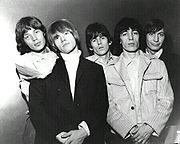
Wait, wait, wait a minute. I know what the globules of thought gathering in your frontal lobe are saying, but stop a second. Put aside all of the last 20 years of mega-tours that seemingly printed their own money with The Tongue on it, tours that featured songs mostly thirty and forty years old. Put aside professionally made, uninspired albums that only had a handful of tracks you really liked. Put aside tabloid fodder about who Mick’s boinking and Keith snorting his dad’s ashes. Part the thick mists of time and return to the Golden Age, the 1960’s and the 1970’s, when Rock’n'Roll was transformed into Rock.
As myth has it, it was the Holy Trinity that inspired the change – The Beatles, The Dylan and The Stones. The Beatles brought joy and sunshine and wondrous melody and studio albums graced with splendor and beauty. That is until John Lennon wanted to let his real pain hang out and “Yer Blues” and “I’m So Tired” hit the listener on the head. The Dylan brought folk seriousness and Beat poetry and “heaviness” to youth pop, hereto lore mostly about little deuce coupes, chicks and hairdos. What did The Stones bring to the table you ask? A helluva lot.
Rhythm and Blues. The Darkness. The Black Beat that the milk and cookies mommies and daddies never wanted their sweet racist kids to hear. SEX. It was music just as heavy and murky as the folk anguish Dylan poured into his records. “I Just Wanna Make Love to You”. “Little Red Rooster”. “Mona”. “I’m a King Bee”. Haunting harmonicas and metallic guitars and thumping drums and the Threat That Something Might Just Happen. Oh yeah. The early albums are filled with covers of their Black idols.
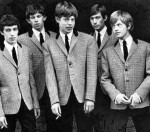
And the rediscovery of the flip side of Black music – Chuck Berry. As Springsteen noted in “Hail, Hail Rock and Roll”, music lovers his age discovered one of the maestro creators of Rock’n'Roll mostly through The Stones, not oldies radio. Witty lyrics with the unforgellable lightness of the Berry Beat. “Oh Carol” “Little Queenie.” “Come On.” So enamored of Mr. Berry were the Stones that they put two of his songs on 1969’s live album “Get Yer Ya-Ya’s Out”, long after they were writing their own smash hits and albums. Jimmy Page once was quoted as saying that he thought of The Stones as the bastard children of Chuck Berry. And Jimmy would know about being a bastard.
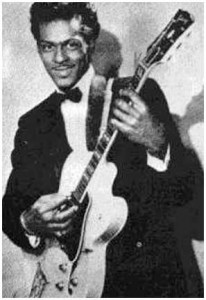
So there was The Stones’ basic template (later Country music would make a lovely ragged entrance). So what did they do with their twin inspirations? The Riff. “Satisfaction” is arguably the first international pop hit where the heavy, fuzz tone riff was more important than the melody or the lyrics about consumerism’s shallowness. “Satisfaction” laid the groundwork for later Blues Rock bands that would alter pop music, The Yardbirds, Cream and Led Zeppelin. Their follow-up singles, “Get Off My Cloud” and “19th Nervous Breakdown” blasted the amphetamine-fuelled Swinging London lifestyle on screaming, frenetic mono singles, tales of a pop star who’s got to leave his apartment on the 99th floor of his block to get some sleep in the park while another relates how a lonely spoiled society chick is driving her lover insane with her emotional problems. Above the mix we hear Jagger’s howling vocals, the voice of modernity, a voice of cacophony and insistent car horns.
They matured in just a couple years. 1966. “Aftermath” was their first album of self- penned compositions. “Paint it Black” thundered with the beat of Morocco smacking into early sitar Psychedelia somewhere around Marrakesh. Again a great riff- “Under My Thumb,” impossible not to dance to and hum along to the pride of a young misogynistic man who’s finally got his woman under control. And “Going Home”, a ten minute Blues work out long before the heavy metal bands made the long, long track a staple of album- oriented radio.
After a brief, uneven foray into Psychedelia and acid (not a great drug for Stones music), they remerged as the Bad Boys once again. “Jumpin’ Jack Flash” wiped out all of then- Psychedelic songs with a pure attack single – basic, rumbling bass, a driving chord structure and riff, the tale of growing up in World War Two London amidst the Blitz (”I was born in a cross-fire hurricane) yet somewhere ending up in the world of a Rock star “Jumpin’ Jack Flash is a gas, gas, gas”), with perhaps the first allusions to the pop star as a bizarre, Christ-like figure (listen to the last verse, mates).
Then come the four mountain peaks that truly give The Stones their claim to being the greatest Rock band after The Beatles (sorry Zep heads, sorry Who-sters) – “Beggar’s Banquet”, “Let It Bleed”, “Sticky Fingers” and “Exile on Main Street”. Four aces based upon music made by Spades. All except ‘Sticky Fingers” are raggedy children, but the blend of Country, Hard Rock, Blues and Berry stand up to this day and are always listed among the greatest Rock Albums of All-Time. The signature tune for “Beggar’s Banquet” is, of course, “Sympathy for the Devil”, one of the most influential and oft- played album tracks in Hard Rock. It began as Jagger trying to be Dylan but metamorphosed into the Keith-a-rockin’ bass riff jam. Not an ode to Lucifer at all. it is a track pointing to the devilish and insane in humanity – Nazis and religious wars and Lee Harvey Oswald and the Hindu fanatic who murdered Gandhi. For “Let It Bleed”, if one has to pick a song it is “Gimme Shelter”, a tune, as a wise friend of mine once noted (who runs The Dangers by the way) it the true expression of what The Stones are really all about. Life is dangerous and irrational and the only solace to be found is in sexual love. Love, sister, it’s just a kiss away, a kiss away. “Sticky Fingers” for me is the truest Classic Rock Album of all time, a collection of tunes that give us the DNA of what the genre is all about. It comes down to “Brown Sugar” as the take-to-a-dcscrt-isle track. Dirty, raucous, a ditty the Marquis de Sade could love, it is probably the best Stones single of all time (yes, even above “Honky Tonk Women”). “Exile” is the beloved train wreck. By this time the Counterculture was no longer pot and LSD, it was cocaine and heroin, and this druggy, confused, scrappy double album catches the fever of the second Lost Generation. The Stones were torn and frayed soul survivors. There is no one track here that stands above the others. It is an album of songs that run together with a steady feeling of inner desperation, tunes of tension and the need for release. ‘Exile” is a sound unto itself.
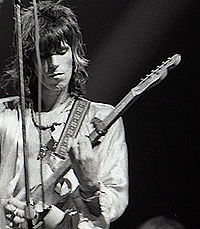
After that the decline came slowly and gradually. Stardom was still present but the meaning of The Stones faded into the biz. Yes, they indeed bounced back twice – “Some Girls” (1978) and “Tattoo You” (1981), but the magic dust was wearing thin in the face of Punk and New Wave bands. “Some Girls” caught the decay of New York City. Studio 54. Sex and drugs and dirty dreams. Andy Warhol as king. Bianca Jagger as queen. The NYC of Lou Reed. “Miss You” was the monster hit, the unstoppable dance track, but the overall vibe was something else. “Fame, fame, fame does it matter?” Strangely enough, the last great Stones album, “Tattoo You”, is a cobbled together affair, a bevy of tunes put together from unused ideas and studio tape from the early ’70’s when The Stones were chart wise on lop, but as far as catching something aching in the marrow of your bones, they were missing the mark. I guess “Waiting on a Friend” says it all. The last track. The last true words from this once prodigious band. “Making love and breaking hearts, it is a game for youth/1 need someone 1 can cry to/1 need someone to protect”.
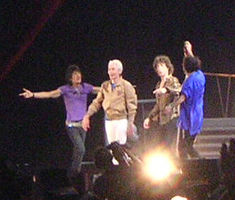
They had said it before long ago in 1966 with a wisdom that was greater than their years when it came to describing Rock stardom and life in general. “What a drag it is getting old.”
–Gary K. Nomeland

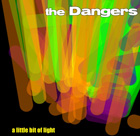
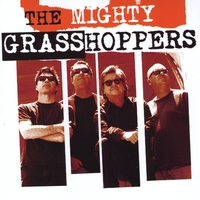
AWESOME essay!!!
Gary: The Stones seem to matter a whole bunch! Lots of feedback on Facebook. I will collect and post here too
Chris